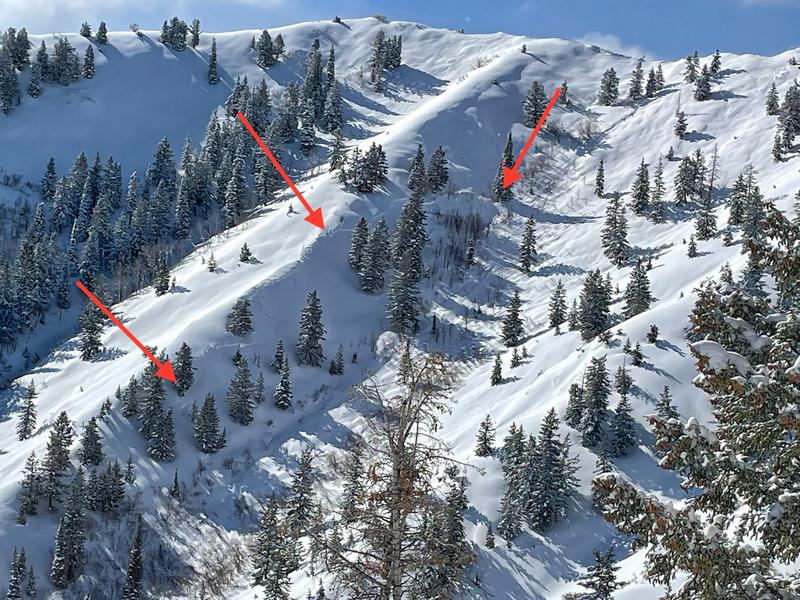Observation Date
3/10/2022
Observer Name
Staples, Brackelsberg, Grewe
Region
Salt Lake » Parleys Canyon » Lambs Canyon
Location Name or Route
Lambs Canyon/Mt Aire
Comments
We spotted two large natural avalanches (this one and this one). We decided to look at the snow on a similar aspect and elevation. First we dug near the ridgeline and didn't find an obvious faceted layer or an unstable looking snowpack, so we moved to a slightly more sheltered location just a tiny bit further downhill becuase the avalanches had happened a little distance below ridgelines.
This is a scary situation. Sure enough, as soon as we reached the top of a clearing (30 degrees in steepness at the top but steeper below us), we triggered two collapses and cracks shooting about 50 ft in front of us. THIS MEANS we would have triggered a slide if we had moved onto the steeper part of the slope. In fact, I'm a little surprised we didn't trigger the slope below us.
Below is a photo of the pit wall where we recorded the snow profile. The second photo shows how the snow fractured on the facets as we filled in our snow pit.


Today's Observed Danger Rating
High
Tomorrows Estimated Danger Rating
Considerable
Coordinates








